Welcome to the guide on how to create realistic Demon Hunter cards. Each class has different design philosophies for the way their cards are designed, and these philosophies are going to be important to know in order to design realistic and balanced cards for each class. This guide will go over Demon Hunter.
Table of Contents
Flavor of Demon Hunter Cards

Flavorwise, Demon Hunter can be described as a mixture of Rogue and Warlock. Demon Hunter incorporate themselves with the acrobatics and "up close and personal" blade work of the former, and the dark magic and demonic forces of the latter.
Despite the class's name, Demon Hunter is not about hunting demons (at least as far as Hearthstone goes), but it actually recruits them to fight with them. Demons are the main tribe of choice for Demon Hunter. Demons respect power, and when you've proven your worth, they join your side. With only a few exceptions, minions in the Demon Hunter class come in two forms: The aforementioned demons and the Illidari.
Unlike Warlock, the Demon cards in Demon Hunter are not depicted as pawns who serve your every command, or stronger entities who demand a sacrifice if you wish for them to work with you. Instead, demons in Demon Hunter are fighters capable of standing their own ground, but still fight by your side, and they respect you just as much as you respect them. Demons don't carry downsides in Demon Hunter unlike some of them in Warlock do. As with Warlock, demons come in multiple different forms like Satyrs, Overseers, Felhounds, and Shivarra among several others. Notably, Wrathspike Brute counts as a Demon whereas other Illidari in the class do not, implying that Illidari in their metamorphosed form count as Demons.
The other main minion type of the class is the Illidari. Illidari come in a variety of different designs, but many Illidari cards are designed depicting them as fast and aggressive. Examples of cards where this is most notable include Crimson Sigil Runner, Coordinated Strike, Magehunter, Command the Illidari, Magehunter, and Illidari Felblade. Illidari are typically characterized by the black cover over their eyes which burst through the cover, as well as a number of tattoos all around the body, and horns on their heads. Illidari in metamorphosed form can further be characterized by several spikes surrounding their body and occasionally a fel aura as seen on Wrathspike Brute and Metamorphosis.
In their quest to destroy the demon armies, Demon Hunters seem to have picked up their opposing demon's forces and are using their own magic against them. Felscream Blast, Immolation Aura, Soul Cleave, and Fel Guardians appear to be examples of Demon Hunter employing dark magic to destroy dark forces. I guess demons are weak against their own magic? Fel Summoner similarly appears to depict someone using fel magic, and Skull of Gul'dan to be you drawing from the fel imbued inside Gul'dan's skull to draw cards.
Demon Hunters tend to carry glaive weapons. This is most obviously noted on Warglaives of Azzinoth, Flamereaper, and the Throw Glaive spell card. Their other weapons appear to stick to the same "double-edged" design that is seen on Demon Hunter weapons. Trueaim Crescent appears to depict a weapon that can function as both a glaive and a bow.
The typical color schemes for Demon Hunter cards tend to contain a lot of green and purple, both of which are prominent on the type of magic depicted in the cards as well as the minions themselves.
The Core Mechanics of Demon Hunter Cards

Attacking With Your Hero
Arguably Demon Hunter's most recurring mechanic is attacking with your hero, which is especially notable with the Hero Power, Demon Claws. Some cards the class has to give your hero attack include Twin Slice, Shadowhoof Slayer, Chaos Strike, Stiltstepper, Relentless Pursuit, Soulshard Lapidary, and Inner Demon.
Demon Hunter also has access to weapons, giving them another source of attacking and boosting the damage potential of some of their cards which give Attack.
The utility of your hero's Attack can be expanded on with cards with effects that trigger off of your hero attacking, such as Battlefiend, Furious Felfin, Satyr Overseer, and Glaivebound Adept. Cards like Blade Dance or Bladed Lady are other ways to use your hero's Attack in other ways.
Outcast
Outcast is a keyworded mechanic exclusively found on Demon Hunter cards. Cards with Outcast have a bonus if you play them from the left or right-most position in your hand, which can sometimes allow for strategic decision making to move cards in your hand around. Outcast effects are usually relatively simple and not very large as to prevent the card from being unplayable in the event that you can't trigger the Outcast efficiently, although exceptions to this do exist.
Consume Magic, Crimson Sigil Runner, and Spectral Sight are all small Outcast cards with the same bonus of drawing a card. Some other Outcast bonuses include Dreadlord's Bite giving you a 1-damage AoE, Illidari Felblade effectively becoming an effect that deals 5 damage and summons a 5/3 minion, and Skull of Gul'dan which reduces the Cost of cards you draw with it by 3.
Some cards that interact with the mechanic include Double Jump to tutor one of your Outcast cards. Redeemed Pariah and Line Hopper are cards that provide a bonus with playing Outcast cards.
Although they don't directly use the Outcast mechanic, Altruis the Outcast and Zai, the Incredible are cards that use the edge-most positions in your hand in other ways, with Altruis giving you a 1-damage AoE when you play a card from this position, and Zai giving you copies of whatever card you hold in the edges of your hand.
Demons
Demon Hunter's tribe of choice are Demons, which come in a vast array of sizes from the small ones like Battlefiend, Shadowhoof Slayer, Ur'zul Horror, or Sightless Watcher to big ones like Priestess of Fury, Hulking Overfiend, Ancient Void Hound, or Pit Commander.
Demon Hunter can also interact with their Demons in various ways. Such cards include Felosophy which copies the lowest-Cost Demon in your hand (and buffs it if you play it from Outcast), Netherwalker which allows you to Discover a Demon, Raging Felscreamer to allow you to summon more Demons or get a larger one out easier, Soul Split to summon a copy of one you currently control, or Fel Summoner allowing you to cheat one out of your hand. Pit Commander also allows you to cheat a Demon out of your deck, which along with Fel Summoner, encourages playing with big Demons.
Swarming
Demon Hunters have the ability to swarm the board with several minions and do it quickly. Combined with the fact that they have several small, powerful minions and the ability to draw a lot of cards, Demon Hunters can put up an extremely aggressive board state quickly.
Demon Hunters have access to many cards allowing for easy swarming capabilities. Some of their most notable swarm cards include Umberwing which summons two 1/1 Felwings, Satyr Overseer which summons 2/2 Satyr tokens whenever your hero attacks Coordinated Strike and Command the Illidari which each summon a number of 1/1 Illidari with Rush, and Soulciologist Malicia which summons a number of 3/3 Souls with Rush dependent on the number of Soul Fragments in your deck.
Minions Dying
Demon Hunters can get some mileage out of their minions dying. This works nicely with their swarming capabilities as these scale up the effects of cards that care about your minions dying. Interestingly, some swarm cards are supported by other swarm cards. Feast of Souls will allow you to draw a card for each friendly minion that died this turn when play it. Fel Guardians costs 1 less for each friendly minions that dies while you hold it, allowing you to summon three 1/2 Demons with Taunt for potentially nothing. Nethrandamus has an effect that summons minions which scale up in size for each friendly minion that dies while you hold it. Wrathscale Naga allows you to use your minions dying more aggressively by dealing 3 damage to a random enemy when it dies.
Card Draw
One of Demon Hunter's biggest strengths is their ability to draw several cards very quickly. Consume Magic, Crimson Sigil Runner, and Spectral Sight are very cheap draw cards for the class. Feast of Souls allows you to draw several cards for 2 mana if you have a lot of minions to throw out. Glide allows you to replace your hand with 4 other cards and force your opponent to do the same thing. Skull of Gul'dan gives Demon Hunter a way to draw several cards at once and also discount them. Acrobatics and Stiltstepper even provide bonuses if you play the card(s) you draw on the same turn that you draw them.
Area of Effect (AoE)
Demon Hunters have access to some AoE cards. Blade Dance deals damage to up to three random enemy minions equal to your hero's Attack, expanding on the utility of your cards which grant Attack. Immolation Aura deals 1 damage twice, which can be used to kill tokens that spawn from minions dying and this also has the advantage of scaling up twice with Spell Damage. Altruis the Outcast gives you a source of 1-damage AoEs after you play the left or right-most card in your hand. Chaos Nova is a simple, but large AoE that deals 4 damage to all minions. Cycle of Hatred is an AoE spell that also swarms the board dependent on how many minions you kill with it. Flamereaper is a weapon that also damages adjacent minions, which works nicely with Attack boosts.
Silence
Silencing is a very small theme, but in the short time that Demon Hunter has existed, two such Silence cards for the class have been printed. Consume Magic which is a very simple Silence that also draws a card, and Magehunter which is a Rush minion that also Silences what it attacks, allowing to take out minions with Deathrattles or several enchantments.
Immune
Immune is a mechanic that is notable on a few Demon Hunter cards. Blur gives your hero Immune on the turn you play (despite its text, the effect is functionally identical to giving your hero Immune), and Relentless Pursuit does the same thing with the addition of also gaining 4 Attack. Illidari Felblade is a 5/3 Rush minion that gains Immune if you play it from Outcast. Ace Hunter Kreen is also a Legendary card that makes all your other characters Immune while attacking.
Opponent Interaction
This is a very small and also very loose theme, but it is such a theme that exists within the class. Demon Hunters have ways of countering their opponent's plays. Mana Burn will give the opponent two fewer Mana Crystals to use next turn. Glide can be used to force your opponent to draw a new hand, which if played in an ideal circumstance, will give them less cards to work with. Star Student Stelina similarly interacts with your opponent's hand by allowing you to throw a card from their hand back into their deck.
Demon Hunter's Limitations & Weaknesses in Card Design

Card Generation
Although card generation is often stated to be a weakness of Demon Hunter, it in practice has acted more of a limitation than a weakness. Demon Hunters do have some access to card generation, although cards with this effect are relatively few and far between and their generation effects are mostly simple. For the most part, Demon Hunter is supposedly to rely on the cards that they put in their deck, so card generation should be designed carefully if you do design it. Existing examples of card generation in Demon Hunter include Netherwalker and Zai, the Incredible. The stats of Twin Slice and Ur'zul Horror counting as card generation can be debatable as they do add cards to your hand from outside the game, although in the case of both of these cards, the tokens are effectively the same as their base cards. Illidari Studies can generate an Outcast card, which will also put it in the right-most position in your hand, although this only generates from a limited pool of cards and these cards generally aren't able to heavily swing a game if you're playing this from a losing state.
Healing
As a class that uses its face to Attack a lot, healing is obviously quite strong in Demon Hunter. Because of this, healing in Demon Hunter can be problematic if it's too strong. This is ultimately what resulted in Aldrachi Warblades being nerfed from 3 Durability to 2, and despite this, it still sees play. Demon Hunter has a few sources of healing, although they rely almost entirely on Lifesteal cards to accomplish this. Classic Lifesteal cards that Demon Hunter has access to include Aldrachi Warblades, Eye Beam, and Soul Cleave. The utility of your Lifesteal effects can be expanded with Il'gynoth to turn your Lifesteal into damage to the enemy hero, although this subsequently shuts off all ability to heal for the class.
The only other source of healing in the class is via Soul Fragments through Spirit Jailer, Soul Shear, and Marrowslicer, although these are cards that you'd rather destroy to use with Shardshatter Mystic or Soulshard Lapidary than actually using it as a heal, and the healing aspect of the cards are delayed.
Removal
Demon Hunters are a class that is heavily centered on character combat, and are thus unable to remove minions in a flash like some other classes can. Instead, they will need to rely on their hero's Attack (and the face damage that comes with attacking) or trading their own minions into a problematic minion. Demon Hunter can also use Silence or Kayn Sunfury to attack through Taunt minions, but they cannot remove them without getting into the fray themselves. Without these cards, the only way to kill a Taunt minion is to use something to attack into it, or hope that whatever damage effects that you have are enough to kill it. If your opponent is able to swarm the board with several large Taunt minions, you'll likely find yourself in a really difficult spot.
Examples of Custom Demon Hunter Cards

Cards here are for to showcase the examples of class themes only and may not be perfectly balanced.




- Steelswing Cadet is a card that upgrades your hero's Attack as a Demon Hunter, although the methodology in which it accomplishes this is a bit different than the typical way of temporarily increasing the Attack of your hero at base. Instead, it increases your weapon's stats. Demon Hunter is a weapon class, opening space to get creative with weapon synergy. It also represents the class-exclusive keyword for the Demon Hunter, Outcast which in the case of this card will buff a weapon in your hand.
- Demonic Glaives is a weapon card for the class that uses a very common mechanic of the class of effects that trigger after your hero attacks, which in this case, summons two 1/1 Illidari with Rush after you attack.
- Demon Souls is a card that utilizes Demon Hunter's mechanic of using your dead minions for a benefit. It also works as support for the Big Demons archetype as your pool will be full of big Demons to resurrect with this.
- Fel Rush is another representative of using dead minions to your benefit, although in a slightly more traditional way for the class by using the death of several smaller minions as opposed to one larger one. It also represents Demon Hunter's ability to draw a lot of cards and go through their deck pretty easily. You can draw 4 cards for pretty cheap if you hold this card while several of your minions die.

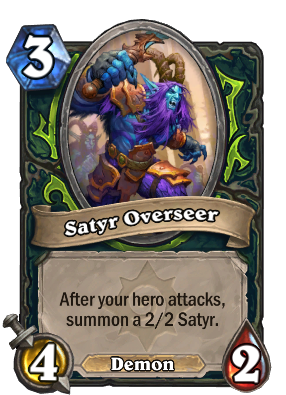
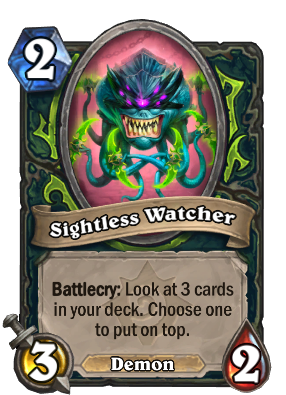
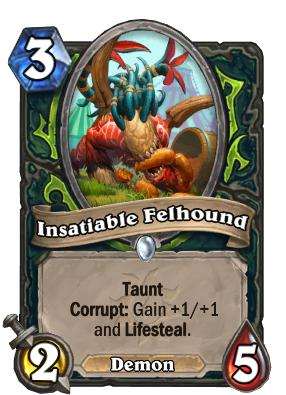
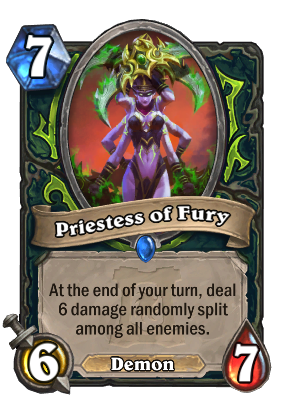
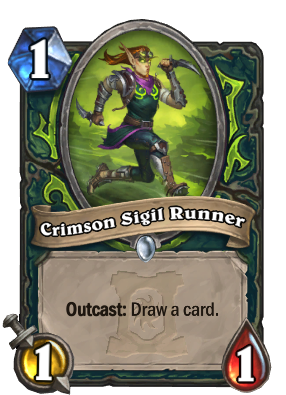
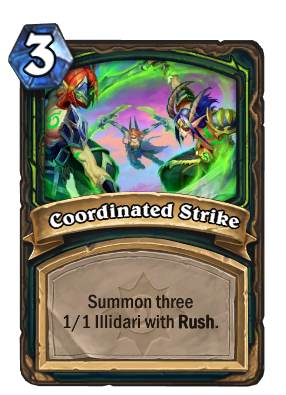
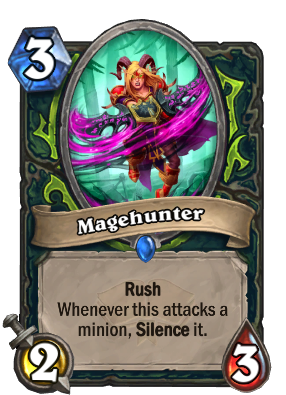
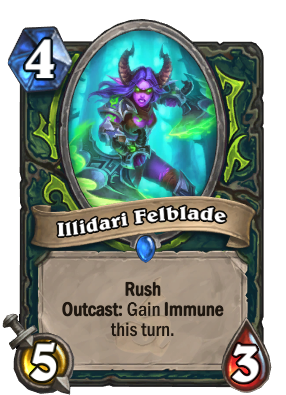
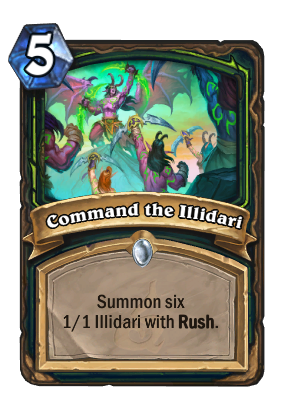
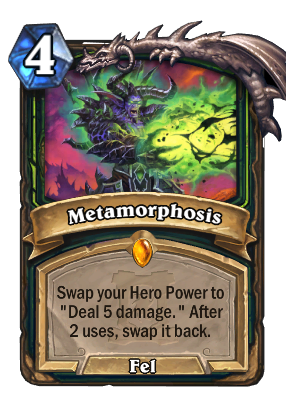
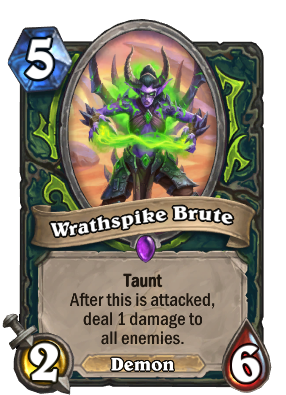
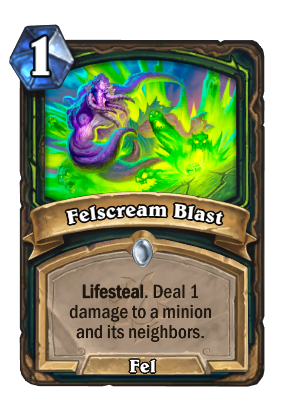
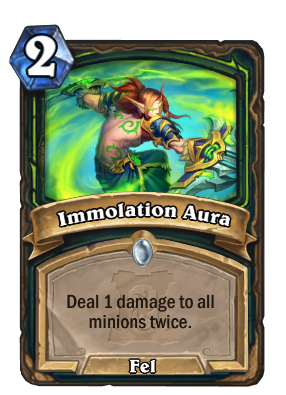
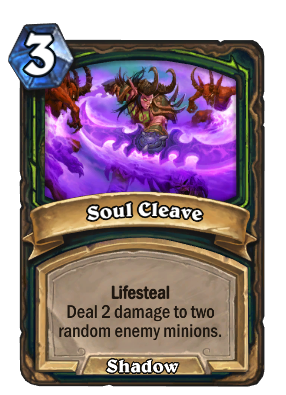
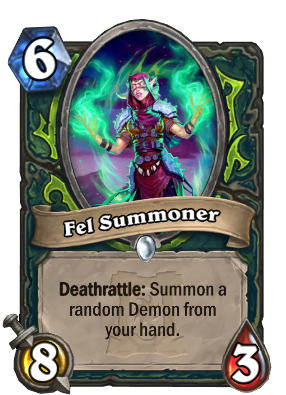
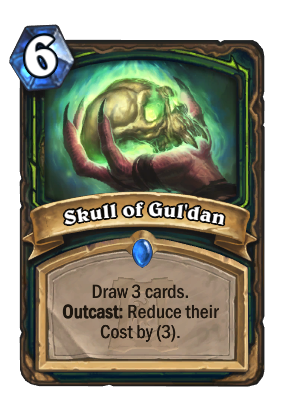
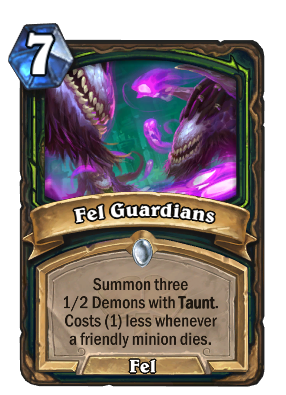
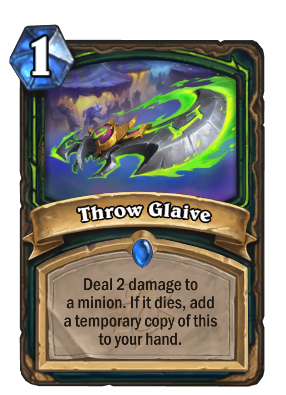
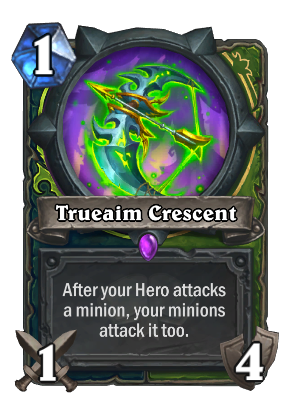
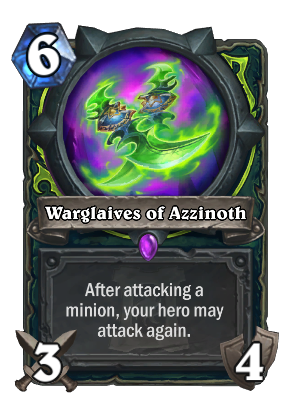
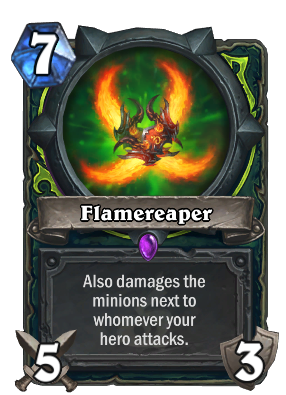
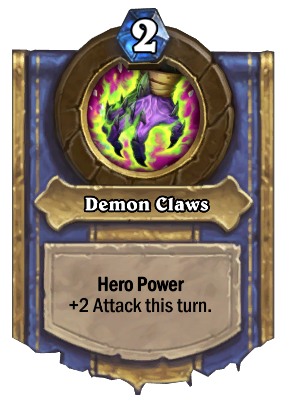
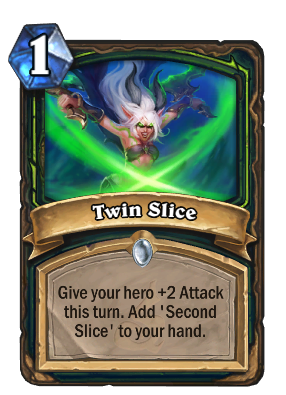
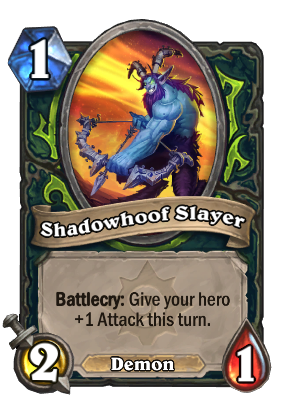
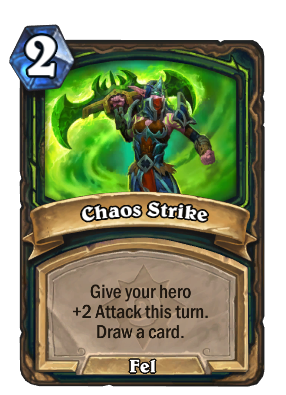
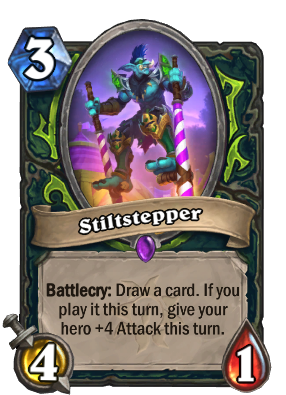
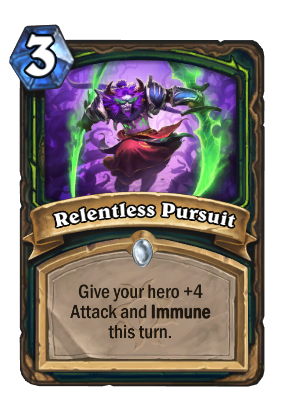
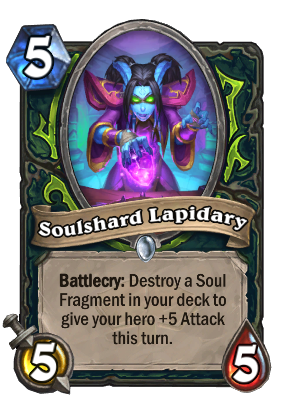
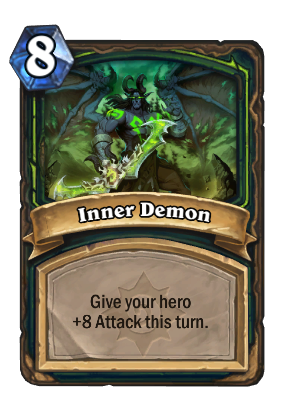
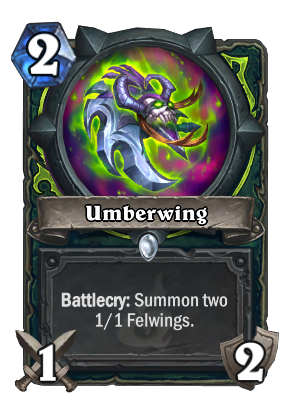
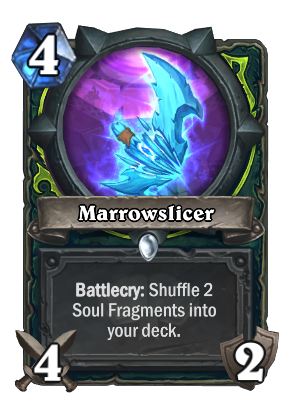
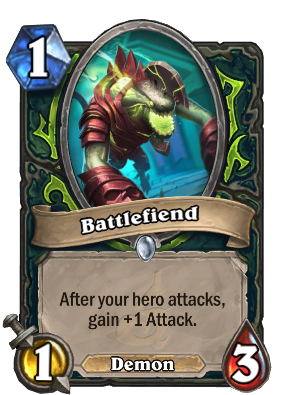
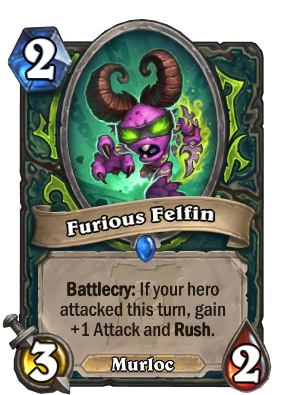
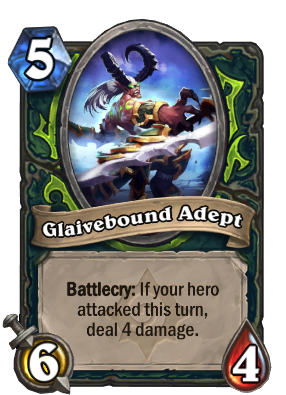
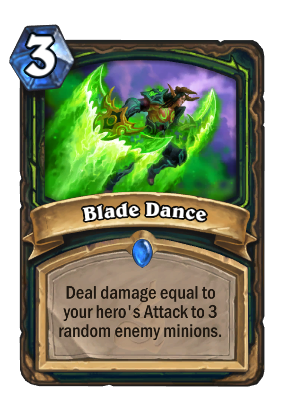
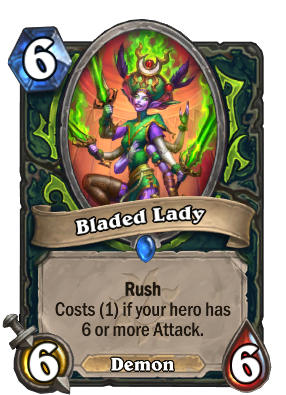
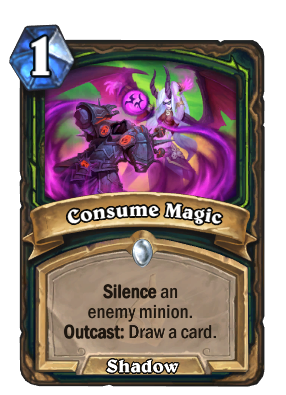
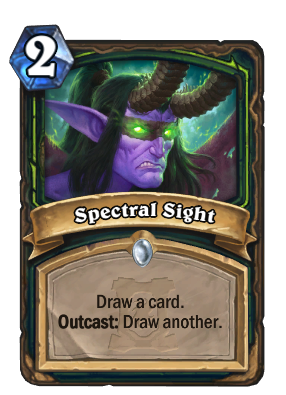
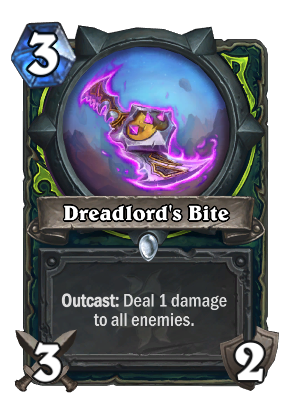
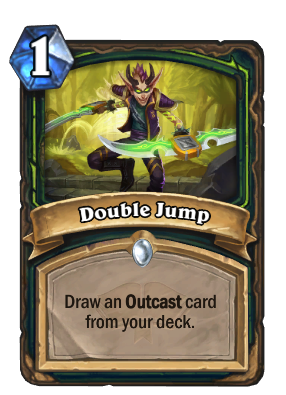
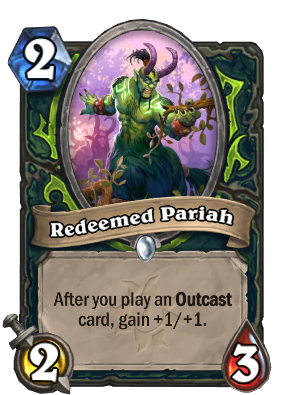
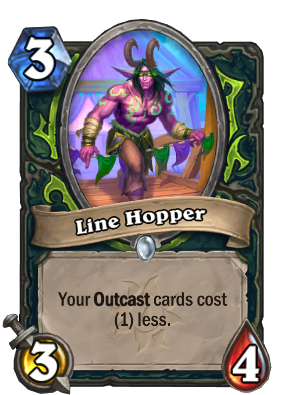
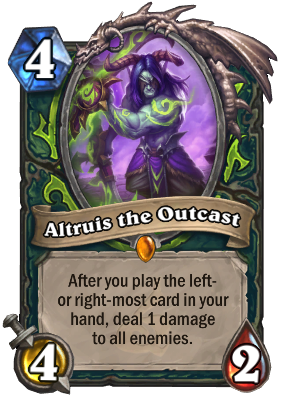
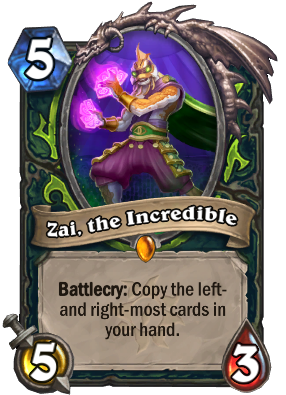
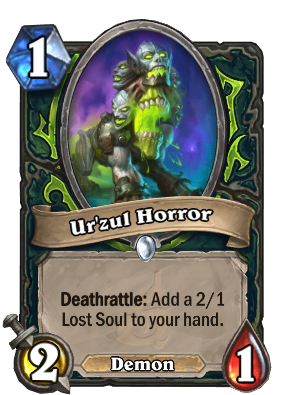
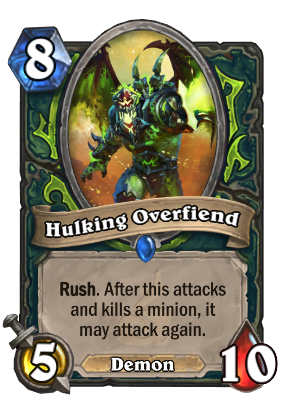
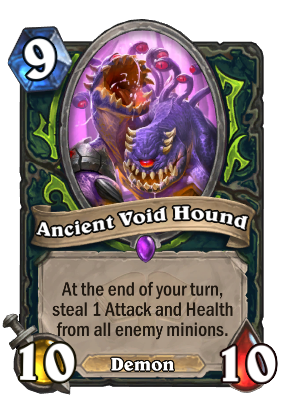
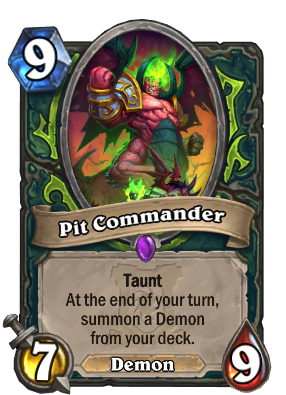
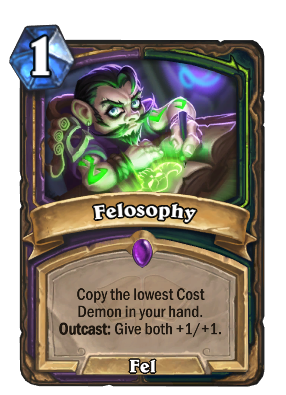
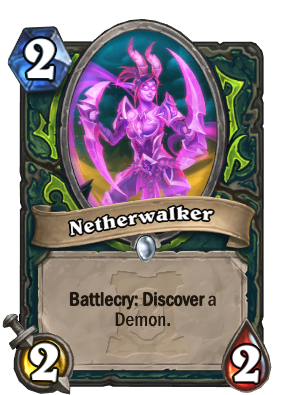
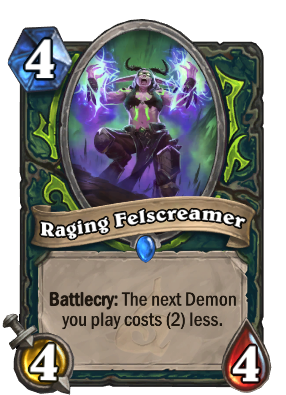
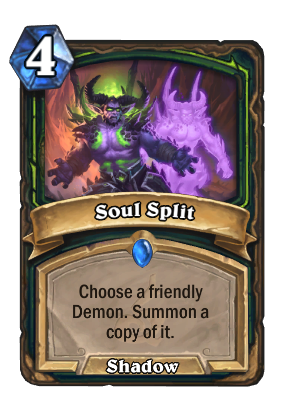
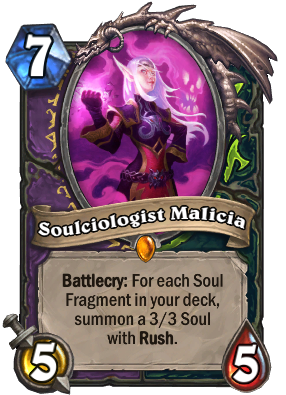
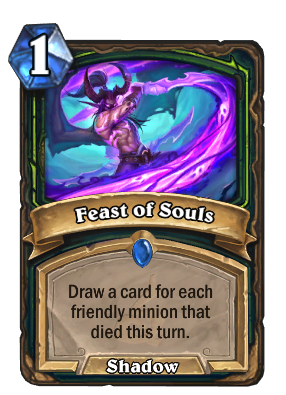
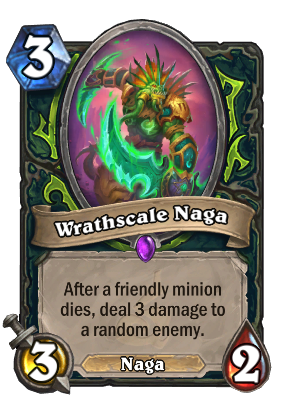
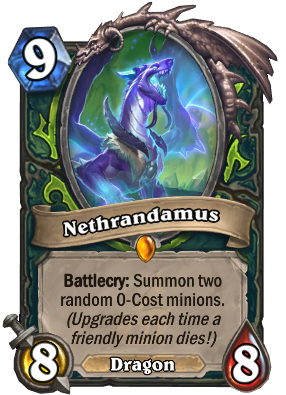
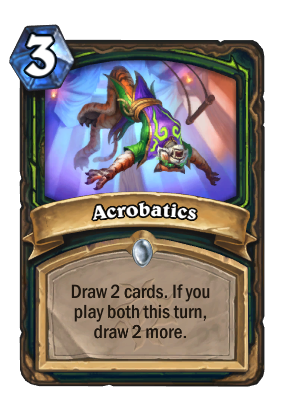
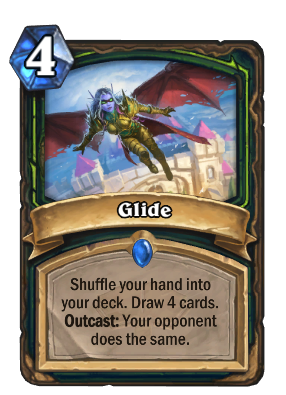
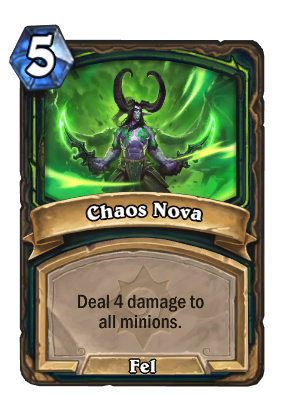
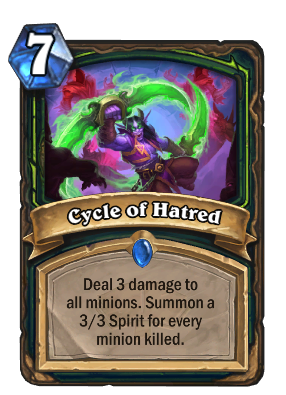

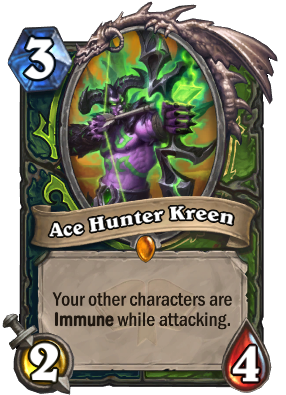
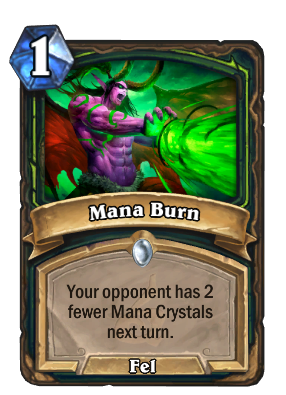
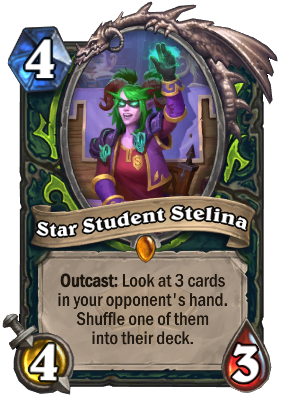
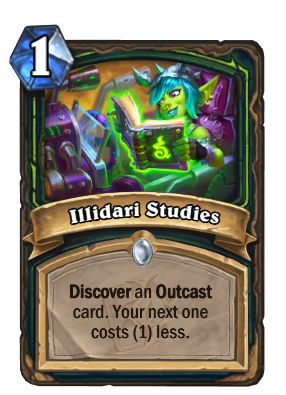
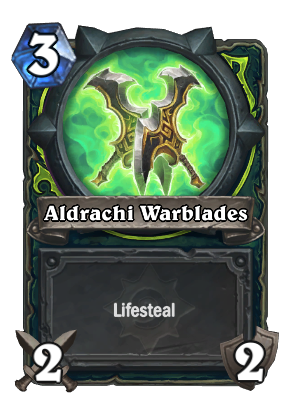
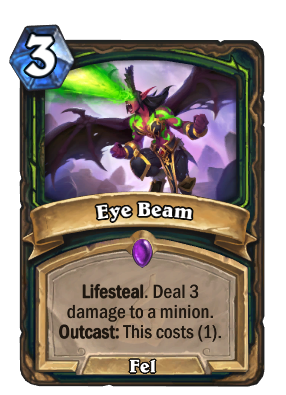
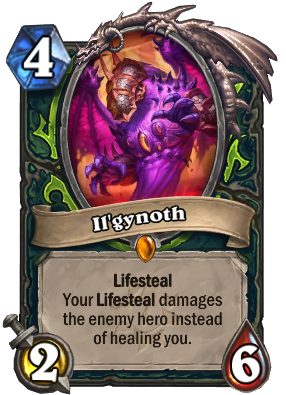
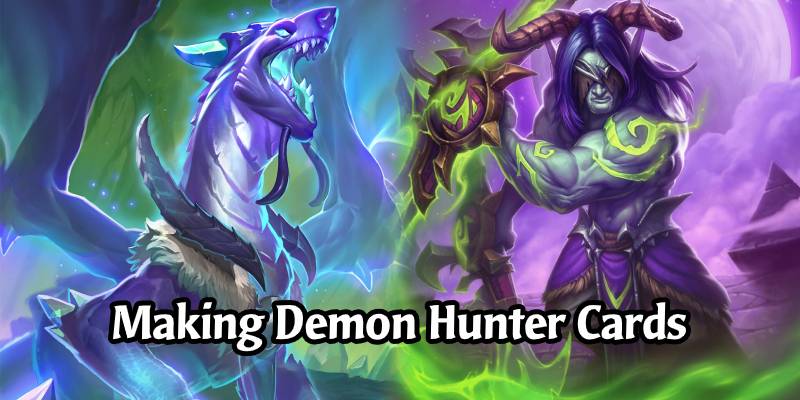
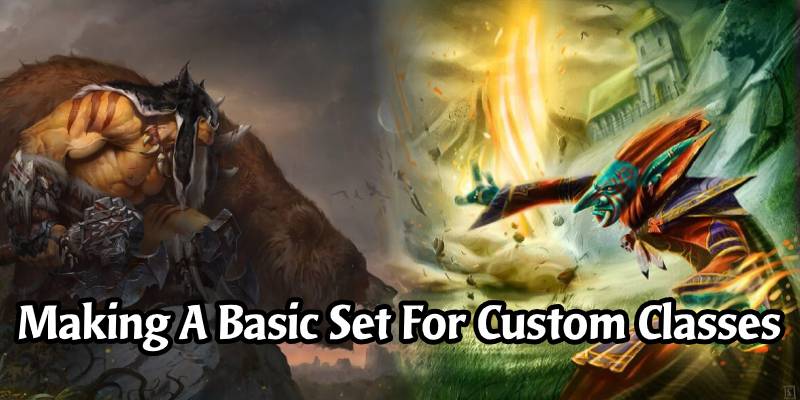
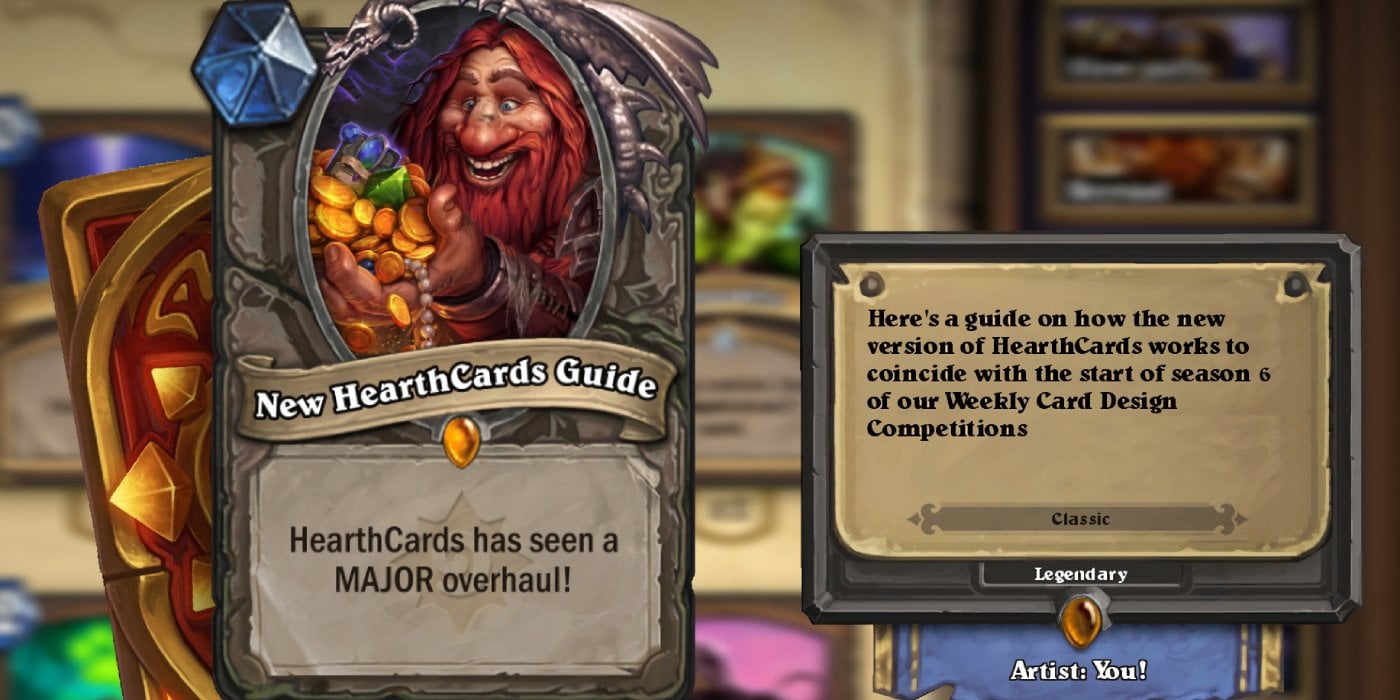
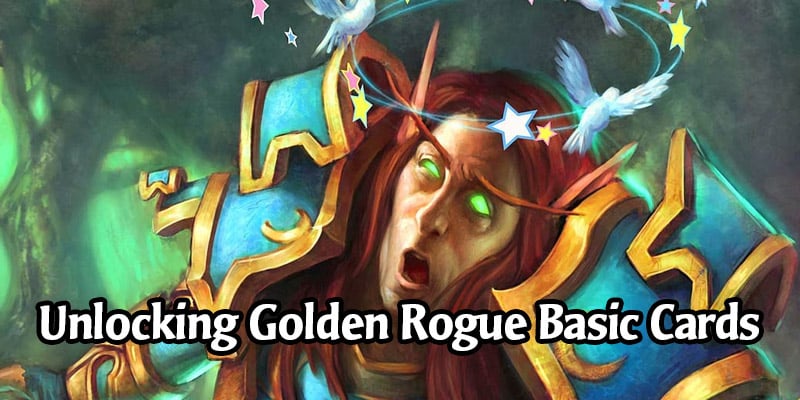
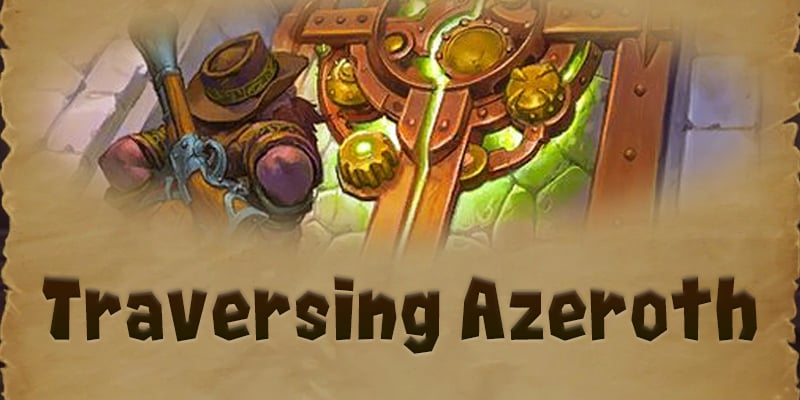
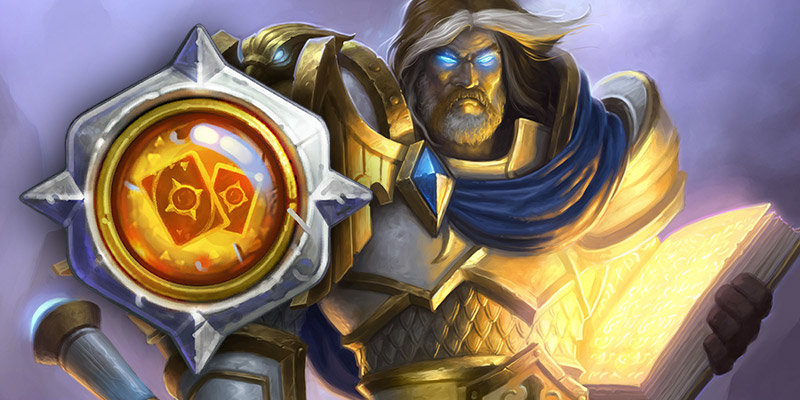
Comments
No Comments Yet. Be the first to create one down below!